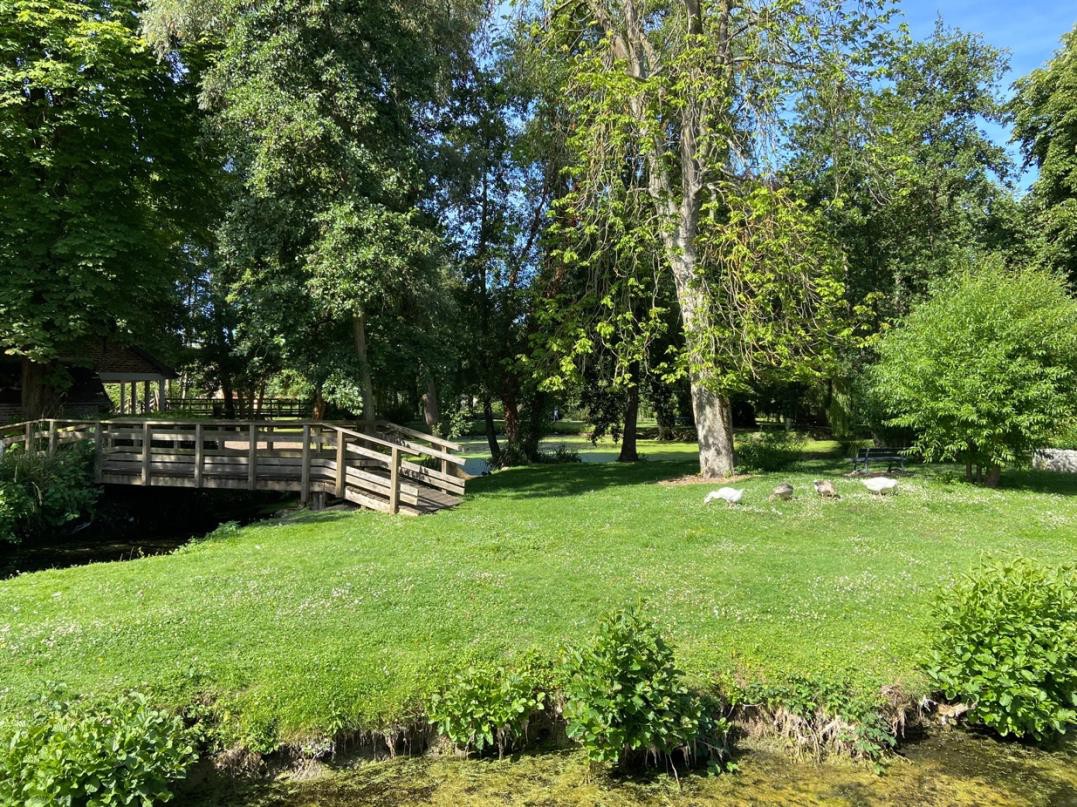Andrea and I traveled from Gare du Nord, by train, to a village, NNW of Paris. Roye is a very old town, established along the King’s Royal route. It is quite close to the WWI battlefields and sustained heavy damage during the First World War. It is also near to two other beautiful small cities, Amiens and Compiégne, as well as the village of Pierrefond.
Roye is home to many retirees and first time home buyers. The local school has large vintage photos of Roye before and after the first war. There are also two monuments in town, dedicated to the local soldiers killed in WWI. The monuments were appended to show those deported during WWII.

The town is quiet with several lovely parks. On July 14th, the Fête National, there was a parade with a talented marching band and many of the local citizens.
Amiens
The largest cathedral in Europe is in Amiens. The cathedral was built in 50 years, 1220 – 1270, a very short time frame. There is a consistency of style. The cathedral could accommodate two Notre Dame’s of Paris. The architect wanted massive height to permit as much light as possible. Amiens is the second tallest cathedral in France, surpassed by Notre Dame of Rouen with a height of 151 m.

Amiens was also home to Jules Verne. He moved there to make his wife happy and fell in love with the city. He served on the city council and was a benefactor for many local projects.

The town was fought over during both World Wars, suffering significant damage, and was repeatedly occupied by both sides. It was rebuilt, keeping the prewar feel of the town, but with wider streets.
Compiégne
One of the oldest cities in France, Compiégne has a rich history, documented from the 600’s. As you would expect, the two « not to be missed » landmarks are the Palace of Compiégne and Saint Jacque Église.

The picture above shows the bedroom of Napoleon III. The palace is large but very accessible. Since it doesn’t have the panache of Versailles nor the proximity to Paris, it is easy to wander through the palace and take in the beauty or ostentation of the royal rooms.
 The palace was originally built in a medieval style by Charles X and nearly completed by his death in 1380. In the 1700’s, Louis XV and XVI made major renovations. The picture below shows the ballroom. Please note, there aren’t any people in the photo. This château isn’t crowded!
The palace was originally built in a medieval style by Charles X and nearly completed by his death in 1380. In the 1700’s, Louis XV and XVI made major renovations. The picture below shows the ballroom. Please note, there aren’t any people in the photo. This château isn’t crowded!
Much of the furniture was lost during the French Revolution. Napoleon I refurbished the palace and later, Napoleon III, changed the functions of some rooms and added unique divans and chairs to the greeting rooms.
The setting is serene and the display of furnishing from the 18th century is quite nice.

The church, is less than 1 km from the château. It is best known has the church of the Carmelite martyrs. During the revolution, several laws and directives were put in place to strip the church of its power and ultimately, to outlaw religious life. 12 Carmelite nuns chose the guillotine over renouncing their vows.

The nuns were guillotined on July 17, 1794. Ten days later, Robespierre was executed, officially ending the Reign of Terror. Some historians believe that deaths of the nuns was pivotal in ending the murderous Terror.
Pierrefond
The immense medieval castle was originally built in the late 14th century by Duke Louis of Orléans. The château was taken down in the 17th century and was in ruins when Napoleon III decided to rebuild it. So now, the village boasts an idealized castle. The scale is incredible and the small town is picturesque.

14 July
Though much of the world refers to July 14th as Bastille Day, the 14th of July or the Fête National is actually the celebration of two events that took place one year apart, the storming of the Bastille and the unity of the French nation.
The Fête de la Fédération (Festival of the Federation) was a massive holiday festival held throughout France in 1790 in honor of the French Revolution, celebrating the Revolution itself, as well as National Unity.
The 1790 celebration commemorated the revolution and events of 1789 which had brought about a new form of national government, a constitutional monarchy led by a representative Assembly.
The inaugural fête of 1790 was set for 14 July, so it would also coincide with the first anniversary of the storming of the Bastille, although the French didn’t want to focus on the storming of the Bastille. I find this both very confusing and very French.is not what was itself celebrated. Very
French. At this relatively calm stage of the Revolution, many people considered the country’s period of political struggle to be over. Towns and villages throughout France were organizing and becoming part of the federation.

France still had many hurdles, but today the 14th of July is a reason for parties, parades and a day off. We spent the day at a backyard pool party, where there was a great amount of wonderful French food and copious amounts of champagne, typically consumed while in the pool.
The French know how to party! Next up, the coast of Normandy.